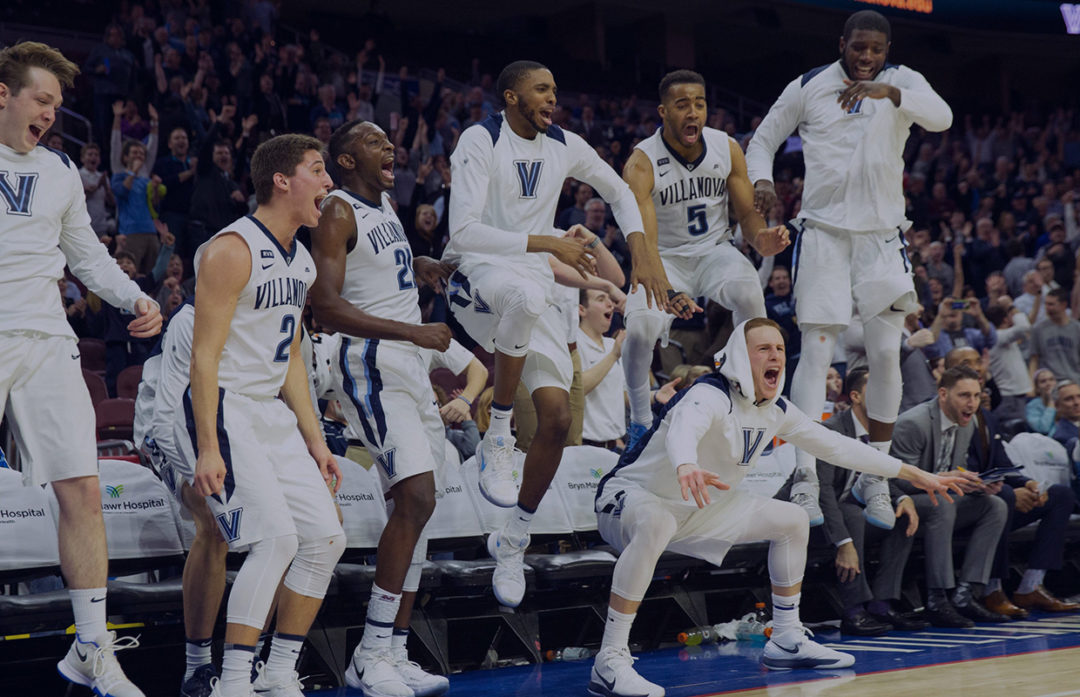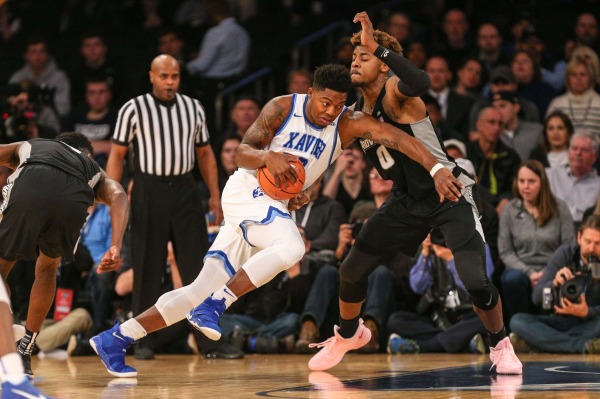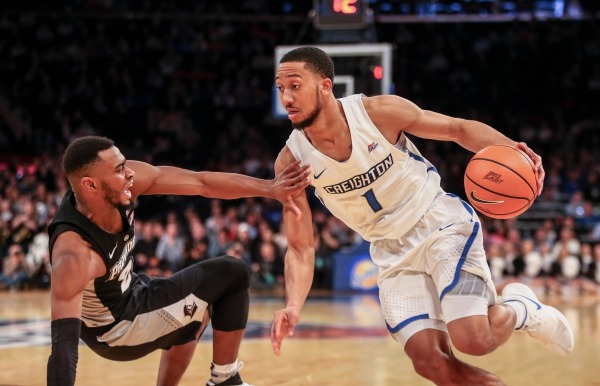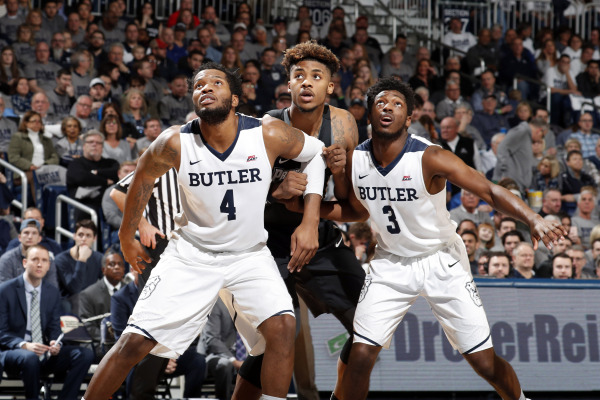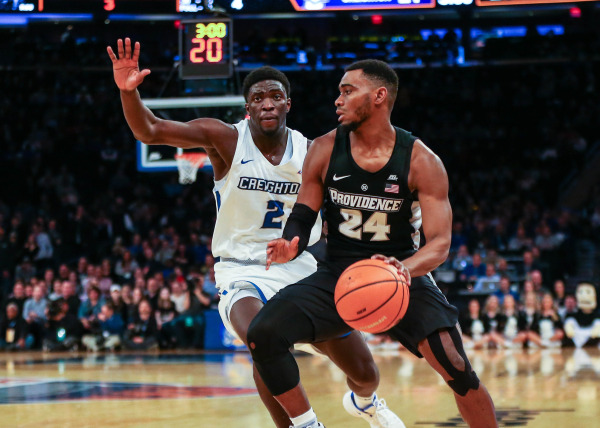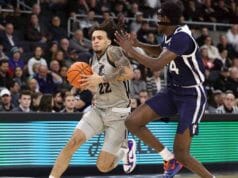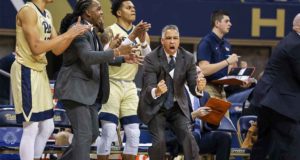On St. Patrick’s Day Weekend I did two things: watched the Chicago River turn from mud-green to Ninja Turtle toxic green, and I binge-watched the first two rounds of the NCAA Tournament.
It was during this weekend that I saw two number one seeds go down. The first was the historic Virginia-UMBC upset that saw the first ever 1/16 upset in the men’s tournament. The second was the Xavier Musketeers, a team with potential Final Four talent, go down in the Round of 32 to Florida State.
Both of these were what we in the industry like to call “bracket busters” because they ruin your brackets. But, while many were mourning the loss of their brackets, the fans of the Big East and the respective Big East teams were worried about another bust – their conference’s busted March performance.
Fans of the Big East have been mostly satisfied since the reform, with one exception: March has shown too much underperformance. Sure, Villanova did win the national title a few years ago, and Xavier did surprise many by making the Elite Eight last year, but otherwise? There seem to be a lot of early exits. This has led fans to worry that their conference may be seen as weak; that they can’t win when it matters most. A lot hinges on March, and if the conference isn’t competing then, can it really be considered among the elites?
March expectations versus reality
In order to understand how the Big East scales in the NCAA Tournament, expectations must be understood. There are fans out there who think if we don’t get five teams in the Final Four every year the conference is somehow a failure. Those fans’ belief is hyperbolic and I won’t entertain their notions beyond that statement.
But many fans do believe that the Big East should be getting two or three teams into the second weekend, with one team in the Final Four ever few years. I believe that to be a reasonable expectation. This is a conference of talented, competitive teams after all, and performance should reflect that.
I can’t dispute the talent of the conference, and I do think these teams are competitive enough to be Sweet 16/Elite 8 talent. But in a single-elimination tournament, where you face a variety of opponents that come with a wide variety of skills and talents, you may get unlucky in your draw. Point in case: Providence went up against one of the biggest teams in the country for their first game. Providence has struggled against bigger teams all season. They lost. They also went up against a team that should have had a much better seed; a fact proven when, two days later, they lit up UNC by double digits before the first half was over and never looked back. UNC lost their first game in Charlotte for the first time ever. Texas A&M got a trip out West.
But that argument isn’t great, because everyone gets randomly seeded and good teams can prepare for anything. (Well, almost – hey UMBC!) Instead, let’s consider where the Big East was seeded. The Big East got six teams in: two one-seeds, two eight-seeds, and two ten-seeds. Of those teams the two ten-seeds both lost to higher seeds (Providence and Butler), one eight lost in the first round (Creighton) the other lost to a five-seed in the second (Seton Hall). Of the two one-seeds, one lost to a nine-seed (Xavier) and the other is in the Final Four (Villanova). I see two upsets here – one of which came in the 8/9 game, but we’ll count it anyway. The others performed how you’d expect in a seeded tournament. So, is this underperforming, or failing to live up to high expectations? In the case of Xavier yes, it’s a failure, everything else though? Pretty much what you’d expect.
But this isn’t just one tournament we’re talking about here, and people will point that out. It’s not like the Big East gets unfavorable draws every year, so what gives? In the past few years there have been several Big East upsets from one- and two-seeds, so what’s the deal?
There are two other things I want to point out: first, every conference has this challenge. The PAC-12 had no teams left after the first weekend. Virginia and UNC – both cream of the ACC crop – were bounced before the first weekend. These things do happen. It’s part of what makes March so much fun. Second, I want to point out that, despite all the upsets, the Big East is still fairly competitive in the Tournament. Fans may be worried that it’s Villanova doing all the heavy lifting, but a well-rounded team that knows how to win in March shouldn’t be seen as a bad thing, nor should it be seen as an “only them” thing. Plenty of Big East teams are on the rise, and I wouldn’t doubt seeing them in the Final Four in the near future.
But this all leads to my bigger point in that not everything is dependent on March. For a conference to be seen as viable, it needs to have lasting appeal and competitiveness. There are other factors to consider beyond a single-elimination tournament.
Recruiting + Scheduling
Possibly the biggest advantage the Big East has going for it is it’s ability to recruit top talent, schedule big games, and come out winning. In that instance, the conference does better than any other as far as I’m concerned.
The RPI rankings by conference indicate that the Big East is second among all conferences this year, behind only the Big 12. The Big East has a 101-23 OOC record, whereas the Big 12 had a 105-22. Behind the Big East was the ACC at 150-39. The win percentage breakdown? The Big 12 had 82%, the Big East 81%, and the ACC 79%. The Big East had some major key wins too. St. John’s, 0-9 in conference, beat Duke – that’s just one of many highlights from the OOC scheduling.
The point – the Big East does know how to win. This is not new, and it’s what makes their brand of basketball not just exciting to watch but entertaining as well.
They also recruit incredibly well. Villanova, Providence, Georgetown, Butler, Creighton – hell even St. John’s – regularly pull in top talent. This indicates two things: first, talented players want to play both for these teams and in the Big East. Second, it shows that the league has sustainability. By continuing to bring in top prospects, not only can the league continue to mature and compete, but they can also put a great product on the floor. March doesn’t happen without the talent coming in.
So yes, while winning in March is very significant, being able to compete with other conferences throughout the season and being able to recruit top talent are both significantly more important to the conference’s competitiveness than the Tournament.
Culture
The Big East culture is one that prioritizes basketball. It’s a group of small schools that play at a high level, have rich histories in college basketball, and are continually contributing to the next chapter of the game. They play their games in some of the most historic and beloved arenas in the world (including their conference tournament at Madison Square Garden). The coaches are a collection of personalities that would make Dave Gavitt proud. They play a brand of basketball that can be described as follows: gritty, tough, disciplined, exciting, and competitive.
These are the types of descriptions you want in a conference. They help build culture and identity. They make your conference more than just names on a jersey.
This is important because culture fosters success. The Big East’s culture is a reflection of their performance. That culture and performance drive the Big East’s development. The culture also drives attention – what kind of top player wouldn’t want to be associated with grit, toughness, and an exciting brand of basketball? Culture influences everything, and the culture of the Big East is not only strong – it’s vital.
But what about “only Villanova”!? AKA what’s next
In the eyes of Big East fans, Villanova is once again carrying the conference. Another Final Four, another shot at the NCAA Title – but where are Providence, Xavier, Butler, and Creighton? Where are Marquette, Georgetown, and St. John’s in this landscape? Why is only Villanova carrying the conference?
The answers are “they’re not” and “be patient.” The conference, though it has a long history tied to it’s name, is still in its infancy. The fact that Villanova is competing at such a high level isn’t a negative for the other nine teams – it instead highlights where they can go and what they can achieve.
And they are going there. Providence has improved it’s recruiting and is more competitive than ever before. Butler, despite two coaching changes, continues to make the Tournament and win. Creighton is recruiting at a high level and will get over their first weekend NCAA hump in time. Xavier, though recently losing their coach, will be back and continue to play at a high level. Georgetown and St. John’s are both on the rise. Marquette is bringing in incredible talent.
Villanova is winning, and that’s great for the conference. But the other teams are on the rise and challenging Villanova – we saw that often this season. And that is likely to continue, because the league is on the rise.
Big East fans should not shy away from Villanova’s success, they should see it as an opportunity for their league to grow. Villanova represents the Big East, but they are not the Big East. And as this league continues to grow, more teams will start to represent the Big East at Villanova’s level.
The Big East is more than March, and every college basketball fan knows it. As long as the teams continue to grow and remain competitive in recruiting and games, the wins in March will come. For now, this still-maturing league is doing bigger and better things than any expert would have initially predicted. Fans should have reasonable expectations, but know that their hopes for this conference are well on the way.


